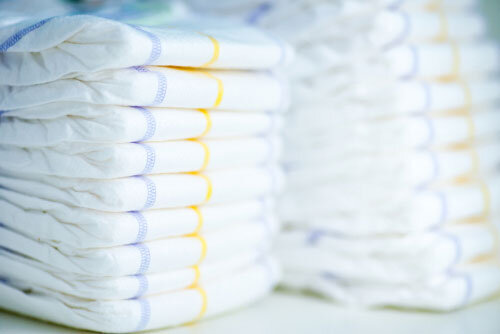Is your child stuck in bedwetting nappies or pull-ups at night?
Most parents of bedwetting children worry about the reasons behind this problem, wondering whether it’s happening as a result of anxiety-related problems at school, a developmental delay or even problems with bladder function and so many turn to nappies and pullups.
In my experience of running a children’s bedwetting clinic for over 15 years, I have found that in the majority of cases the cause is simply “habit”. Somehow over the years, a child gets into the habit of wearing pull-up pants or similar absorbent protection and never gets to grips with staying dry all through the night. It’s as simple as that.
It can be difficult to stop using pull-ups ‘cold turkey’
Most families find themselves caught in that ‘catch 22’ situation. They never feel confident enough to stop using absorbent pants completely and this is understandable. Going ‘cold turkey’ can cause lots of extra laundry, embarrassment amongst siblings, dramas on school trips and sleepovers as well as exacerbating feelings of failure.
But at the same time, hanging on to night-time pull-up pants, hoping that this problem will somehow magically disappear (it rarely does) never quite gives the child’s mind the opportunity to allow the key neurological pathways to wire up and create that ‘auto-pilot’ for staying dry at night. And this is where the solution lies.
Wearing night-time protection creates a habit
But getting stuck in wearing night-time protection is becoming more and more common. Have you noticed how the supermarket shelves are increasingly stocking night-time ‘pull-up’ protective pants for teenagers up to the age of 15? A generation ago, these did not exist to the same extent. Make no mistake, the manufacturers are more than happy to keep on making these in all sorts of fancy designs and colours to keep you and your child happy.
A quick survey of my bedwetting clients, using nappies and pullups, revealed that the average amount of money spent on protective night-time pants is £7 – £10 per week. Wow, just think how good you would feel if all that money stayed in your purse, rather than being thrown in the bin (quite literally).
The fastest solution might be the most uncomfortable one
I believe that the super-absorbent quality of these nappies or night-time protection pants actually trick the child’s mind into thinking they’re simply not wet. And so the vital connection between the actions of the body and the results produced are never really made. It’s like trying to learn to play the piano wearing sheepskin gloves – it’s very much harder, if not impossible, to do.
My advice to all parents of bedwetting children has to be ‘bite the bullet’ and stop using this protection from around the age of 5 or 6 years. From this time onwards, it’s going to be better to protect the bed, rather than the child. There are steps you can take to prepare your child for moving onto the next stage that will make the process so much easier – check out my Stop Bedwetting in 7 Days programme for more details.
Alicia Eaton is a Children’s Emotional Wellbeing and Behavioural Change Specialist based in London’s Harley Street since 2004. She is the creator of the best-selling ‘Stop Bedwetting in 7 days’ training programme. She’s also the author of ‘First Aid for your Child’s Mind’ and ‘Words that Work: How to Get Kids to Do Almost Anything’.
For more details see www.aliciaeaton.co.uk.



